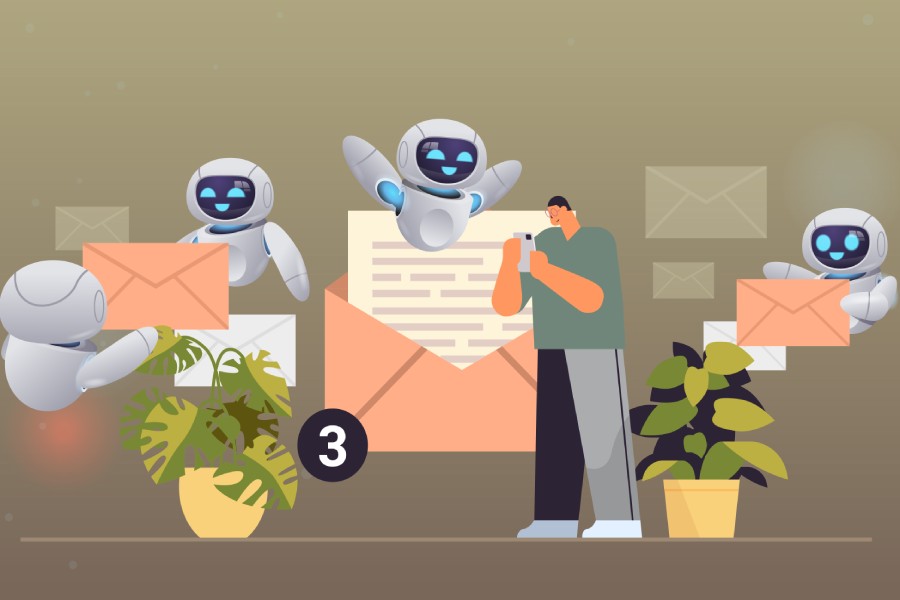Complete Guide To AI Email Automation For Marketers In 2025
In 2025, AI-powered email automation has evolved from a time-saving tool into a strategic powerhouse for marketers. With advanced machine learning, natural language generation, and predictive analytics, AI now enables hyper-personalized campaigns, real-time audience segmentation, and automated content creation at scale.
Marketers can leverage AI not just to send emails, but to anticipate customer needs, optimize subject lines for higher open rates, and deliver dynamic content tailored to each recipient’s behavior and preferences. This guide will walk you through the latest AI email automation trends, tools, and best practices—equipping you to boost engagement, drive conversions, and stay ahead in a highly competitive digital landscape.
Introduction to AI Email Automation: Definition and Benefits
Artificial intelligence (AI) has revolutionized email marketing, transforming traditional campaign strategies into sophisticated, data-driven processes. AI email automation refers to the utilization of advanced technologies such as machine learning, natural language processing, and predictive analytics to streamline, optimize, and personalize email marketing efforts. This shift allows marketers to manage complex automation workflows, enhance customer engagement, and significantly improve key metrics like email open rates and click-through rates.
The benefits of AI-driven email automation are extensive. Through AI-powered email tools such as smart autoresponders and response automation, marketers can perform dynamic email segmentation, enabling targeted messaging that resonates with specific customer segments. Workflow automation in tools like HubSpot or ActiveCampaign allows for efficient email campaign management, including drip campaigns and automated follow-ups, which nurture leads seamlessly through the sales funnel.
By leveraging AI for email content optimization and email deliverability optimization, businesses can improve both the quality and reach of their communications. Additionally, AI facilitates spam filtering and email classification, ensuring higher inbox placement rates and more effective email inbox management.

The Evolution of Email Marketing Leading Up to 2025
Email marketing has undergone significant transformation over the past decade, evolving from simple broadcast messages to highly sophisticated, behaviorally targeted campaigns. Early email marketing software required manual segmentation and scheduling, but advancements in artificial intelligence introduced automation software that revolutionized these tasks.
By 2025, many renowned email marketing platforms—including Mailchimp, Salesforce Pardot, Marketo, and ConvertKit—have integrated AI capabilities such as machine learning algorithms to analyze vast email datasets. This analysis enables predictive analytics that anticipate customer response behavior, allowing marketers to deploy event-triggered emails and personalized recommendations with pinpoint accuracy. The rise of conversational AI, chatbots, and voice assistants has further enriched customer interaction, creating a seamless experience that merges email with multi-channel marketing strategies.
Innovators such as Andrew Ng and Fei-Fei Li have contributed foundational insights into machine learning, while Geoffrey Hinton, Ilya Sutskever, and Demis Hassabis have pioneered breakthroughs in neural networks that undergird today’s AI-powered email tools. Leaders like Elon Musk and Boštjan Hrovat have championed ethical AI deployment, ensuring that automation workflows enhance—not replace—human creativity in marketing. This evolution has culminated in a landscape where AI enables highly personalized, responsive, and efficient campaigns that are crucial in navigating the crowded inbox.
Key AI Technologies Powering Email Automation
Several core AI technologies support modern email automation software:
- Machine Learning Algorithms: These power predictive analytics for email response prediction, enabling marketers to anticipate customer engagement and adjust campaigns in real-time. Platforms like SharpSpring and Iterable utilize these algorithms to refine email segmentation and lead nurturing strategies.
- Natural Language Processing (NLP): NLP drives email content optimization by analyzing and generating personalized email templates and subject lines to enhance email open rates. Tools like Emma and GetResponse incorporate NLP to improve conversational AI features, facilitating smarter chatbots and interactive customer experiences.
- Sentiment Analysis: Applied through email analytics, sentiment analysis gauges customer responses and sentiment trends within email content and replies. This data informs customer relationship management (CRM) systems like Zoho Campaigns and Benchmark Email to adapt communications accordingly.
- Email Classification and Spam Filtering: AI-enhanced classification helps maintain email deliverability by filtering potential spam and ensuring compliance with industry standards. Sendinblue and Drip implement these features to increase campaign deliverability success.
- Conversational AI and Chatbots: These technologies, integrated into sales automation platforms like Outreach and Yesware, provide real-time customer support and conversational touchpoints within email campaigns, boosting customer engagement and conversion.
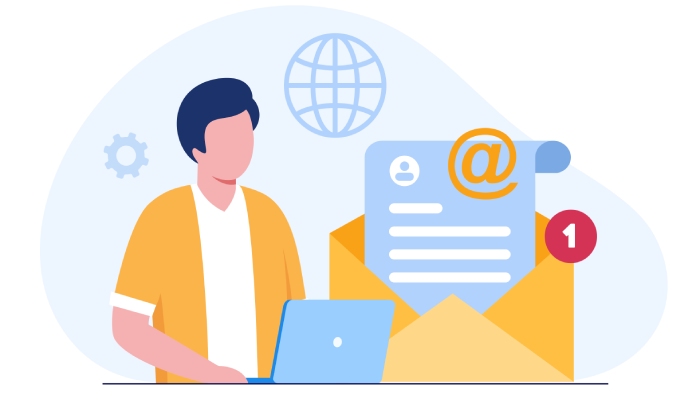
Setting Up AI-Driven Email Automation: Tools and Platforms
Implementing AI email automation requires choosing the right mix of tools and platforms tailored to organizational needs. Key players in the market, such as Mailchimp, HubSpot, and ActiveCampaign, offer sophisticated campaign automation platforms with built-in AI features that cover a broad spectrum of automation workflows.
For instance, HubSpot excels in workflow automation paired with customer segmentation and email list management, providing AI-powered email scheduling and email tracking capabilities. Marketo and Salesforce Pardot, on the other hand, are suited for enterprises focusing on sales automation combined with response automation and advanced email analytics.
Emerging platforms like Autopilot and Sender emphasize user-friendly interfaces with AI-enhanced email list cleaning and email deliverability optimization. Campaign Monitor and Constant Contact integrate A/B testing features driven by machine learning models to optimize email content and subject lines dynamically.
Automation workflows in these platforms often include:
- Automated follow-ups based on behavioral targeting and email open rates.
- Drip campaigns that nurture leads progressively with personalized recommendations.
- Event-triggered emails that respond instantly to customer actions or milestones.
- Integration with customer relationship management (CRM) systems to maintain cohesive communication across multiple touchpoints.
Collaboration between marketing teams and AI experts remains critical to harness the full potential of these tools, ensuring ethical use and continuous refinement of machine learning models.
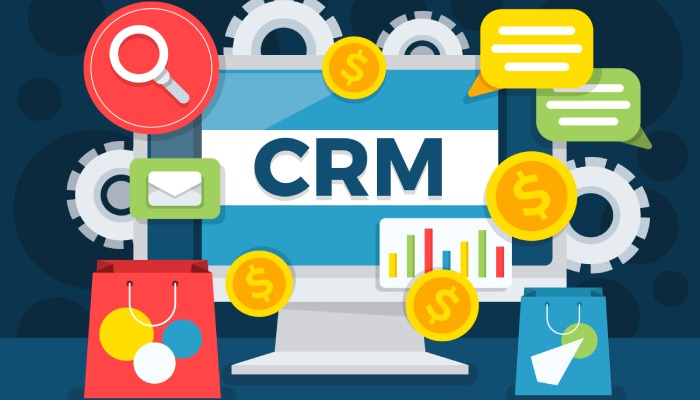
Data Collection and Management for Effective AI Email Campaigns
Data forms the backbone of effective AI email automation. In 2025, marketers increasingly rely on sophisticated data-driven marketing strategies underpinned by robust email list management and email dataset analysis.
Collecting quality data from multiple sources—customer segmentation databases, email tracking systems, and behavioral targeting insights—is essential. Campaign automation platforms like ConvertKit and SharpSpring offer integrated solutions for email list cleaning, reducing bounce rates and improving overall deliverability.
Data quality directly impacts the accuracy of predictive analytics and email response prediction models. Salesforce Pardot and Benchmark Email exemplify platforms that provide comprehensive email analytics dashboards, giving marketers real-time visibility into campaign performance, including email open rates, click-through rates, and conversion metrics.
Furthermore, seamless integration with customer relationship management tools such as Keap (formerly Infusionsoft) enables synchronized data flow, supporting lead nurturing and sales automation initiatives. Advanced AI capabilities encompassing email classification and sentiment analysis further enrich the data pool, allowing marketers to tailor content dynamically and enhance customer engagement.
An increasing number of marketers now implement event-triggered emails and automated workflows that rely on real-time data inputs, streamlining campaign responsiveness. The synergy of AI and effective data management results in a scalable system that delivers targeted, impactful email marketing campaigns with measurable ROI.
Personalization Techniques Using AI in Email Marketing
Artificial intelligence has profoundly transformed email personalization, elevating it beyond basic merge tags to sophisticated dynamic content generation. AI-powered email tools leverage machine learning and natural language processing (NLP) to analyze large email datasets, enabling highly tailored email campaigns that resonate on an individual level. By integrating behavioral targeting, these tools can deliver personalized recommendations that match recipient interests, product preferences, and browsing habits, thus boosting customer engagement.
Campaign automation platforms like ActiveCampaign and Drip utilize AI-driven email content optimization to craft subject lines and body text that increase email open rates and click-through rates. Smart autoresponders, a form of response automation, allow emails to trigger personalized replies based on recipient actions or queries, enabling more conversational AI experiences that drive conversions. Thought leaders such as Andrew Ng and Fei-Fei Li have contributed foundational insights into how NLP extracts meaningful patterns to power these personalization techniques.
Segmentation and Targeting with AI Algorithms
Effective email segmentation relies heavily on machine learning algorithms that analyze customer segmentation data, including demographics, purchase history, and engagement levels. Tools like HubSpot, Salesforce Pardot, and Marketo employ predictive analytics to automatically segment email lists, optimizing email deliverability and minimizing spam filtering by targeting the right audience at the right moment. This automation software supports email list management and email list cleaning processes, ensuring campaign integrity and reducing bounce rates.
AI-enhanced segmentation goes deeper by incorporating sentiment analysis to group recipients according to emotional responses, alongside email classification techniques that categorize inbox behaviors. This granular segmentation enables event-triggered emails and drip campaigns tailored to every stage of the customer journey, enhancing lead nurturing and customer relationship management (CRM) outcomes.
Crafting High-Converting Email Content with AI Assistance
The art of crafting compelling email content has been revolutionized by AI-powered email marketing software such as Mailchimp, Sendinblue, and Campaign Monitor. Utilizing NLP and machine learning models, these platforms analyze historical email performance data to inform email templates that maximize engagement metrics. AI-driven email content optimization recommends adjustments to tone, length, and call-to-action phrasing based on recipient behavior and preferences detected through email tracking and email analytics.
Conversational AI and chatbots integrated into email campaigns create interactive email experiences that guide users towards conversion goals. Moreover, campaign managers benefit from AI insights into email response prediction, enabling data-driven marketing decisions that improve sales automation workflows and boost ROI. Industry experts like Demis Hassabis and Ilya Sutskever have advanced machine learning methods that underpin these sophisticated content creation capabilities.
Optimizing Send Times and Frequency Through AI
Email scheduling remains a cornerstone of successful email campaign management, and AI has introduced unprecedented precision to this practice. Machine learning algorithms analyze past email open rates and click-through rates to determine optimal send times customized for each recipient’s timezone and engagement pattern. Solutions offered by ConvertKit, Zoho Campaigns, and Iterable employ predictive analytics to automate email scheduling, reducing guesswork and increasing overall campaign effectiveness.
Automation workflows embedded in these platforms also control email frequency to avoid over-saturation, leveraging behavioral data to trigger automated follow-ups and suppress emails after inactivity. This thoughtful cadence management enhances email deliverability optimization by mitigating the risk of spam complaints and unsubscribes, ultimately nurturing stronger customer relationships.

A/B Testing and Performance Analysis Using AI Insights
A/B testing is integral to refining email marketing strategies, and the infusion of AI amplifies its power. Automation software such as Benchmark Email, Emma, and SharpSpring use machine learning to design multivariate A/B tests that simultaneously evaluate subject lines, email content, CTAs, and send times. AI processes email dataset analysis in real-time, accelerating feedback and enabling agile campaign adjustments.
Email analytics platforms equipped with advanced AI provide comprehensive reporting on email open rates, click trends, and conversion funnels. Insights from email response prediction and sentiment analysis help marketers understand not only what content performs best but also why certain segments respond differently. Campaign automation platforms like Autopilot and Sender equip teams to implement these iterative improvements seamlessly within multi-channel marketing strategies.
Integrating AI Email Automation with CRM and Marketing Stacks
The synergy between AI-driven email marketing tools and customer relationship management systems is pivotal for maximized impact. Leading CRM platforms such as Salesforce, HubSpot, and Keap (formerly Infusionsoft) integrate deeply with AI-powered email marketing software, facilitating seamless data synchronization for better customer segmentation, lead nurturing, and sales automation.
This integration ensures that AI-generated insights from campaign automation platforms inform broader marketing stacks, from social media to voice assistants, enhancing omnichannel customer engagement. Technologies like conversational AI chatbots not only manage email inbox management but also support response automation via email classification and spam filtering. Marketers benefit from unified dashboards that consolidate email tracking, campaign analytics, and predictive analytics, empowering data-driven marketing decisions that drive revenue.
Harnessing artificial intelligence across these critical facets—from email personalization through AI algorithms to CRM integration—redefines the landscape of email marketing. Entities like Mailchimp, Sendinblue, and HubSpot exemplify the widespread adoption of these technologies, influenced by pioneers such as Geoffrey Hinton and Elon Musk, whose innovations continue to push AI’s boundaries in digital marketing.
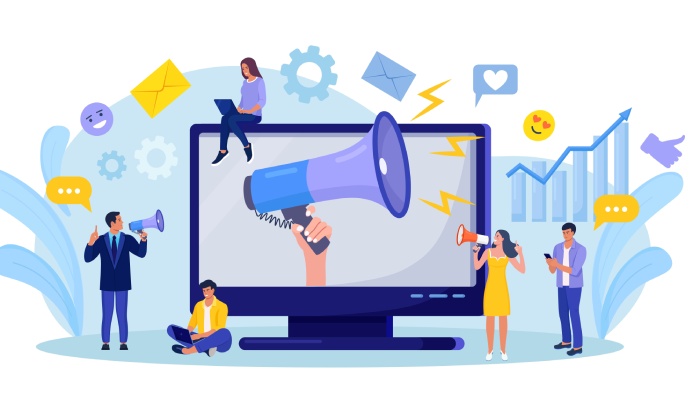
Compliance and Ethical Considerations in AI Email Automation
As artificial intelligence becomes deeply embedded in email marketing strategies, ensuring compliance with data protection regulations and ethical standards is paramount. Regulatory frameworks such as the General Data Protection Regulation (GDPR) and the CAN-SPAM Act impose strict guidelines on email list management, consent collection, and unsubscribe capabilities. AI-powered email tools, such as those offered by HubSpot and Mailchimp, facilitate automated compliance by integrating features like automated opt-out management and spam filtering to uphold legal requirements.
Ethical considerations extend beyond legal compliance to include respecting customer privacy and avoiding manipulation. Machine learning algorithms and natural language processing (NLP) models that power email content optimization and behavioral targeting must be transparent and designed to prevent intrusive or misleading personalization. For instance, email segmentation and personalized recommendations should enhance customer engagement without overstepping privacy boundaries.
Moreover, the use of AI in email classification, sentiment analysis, and email response prediction requires sensitivity to avoid bias. Developers like Geoffrey Hinton and Fei-Fei Li advocate for ethical AI practices that emphasize fairness and accountability. Campaign automation platforms such as Salesforce Pardot and Marketo embed ethical safeguards by enabling granular control over automated workflows while ensuring that automated follow-ups and drip campaigns honor user preferences.
Measuring ROI and Success Metrics for AI-Powered Email Campaigns
The integration of AI-powered email tools offers unparalleled opportunities for data-driven marketing and precise measurement of ROI. Email campaign management platforms such as ActiveCampaign, Sendinblue, and Iterable utilize predictive analytics and email tracking to deliver insights into email open rates, click-through rates (CTR), and conversion metrics in real-time.
A/B testing remains a cornerstone in evaluating the effectiveness of email templates, subject lines, and automated workflows. This testing, powered by machine learning algorithms, optimizes sales automation and leads nurturing campaigns by identifying combinations that maximize customer engagement and minimize email bounce rates.
Email deliverability optimization is another critical success metric. Tools like Constant Contact and Drip deploy email deliverability analytics alongside spam filtering to improve inbox placement. Additionally, campaign automation platforms provide detailed email analytics that include performance indicators for event-triggered emails and smart autoresponders, allowing marketers to refine workflow automation continuously.
Furthermore, integrating customer relationship management (CRM) systems such as Zoho Campaigns and Keap with email marketing software enables multi-channel marketing strategies that measure the overall impact on pipeline development and customer lifetime value. These insights allow businesses to attribute revenue accurately and justify investments in AI-driven email marketing initiatives.
Future Trends and Innovations in AI Email Automation
Looking ahead, the future of AI in email marketing promises transformative innovations that will redefine campaign automation and customer communication. Conversational AI and chatbots, inspired by pioneers like Demis Hassabis and Ilya Sutskever, are poised to integrate more seamlessly with email inbox management systems, enabling real-time, interactive customer engagement directly from email clients.
Advanced natural language processing and sentiment analysis will power hyper-personalized email content optimization, moving beyond static email personalization to dynamically crafted messages tailored to individual behavioral cues. Voice assistants integrated with email platforms will allow marketers and recipients alike to interact with email content hands-free, streamlining email scheduling and response automation.
Machine learning algorithms will further enhance predictive analytics, enabling more accurate email response prediction and offering personalized recommendations that drive conversions. Campaign automation platforms such as Nureply, Benchmark Email, Emma, and Autopilot are investing heavily in AI research to develop enhanced automation workflows that support seamless integration of email segmentation with multi-channel marketing tactics.
Additionally, the rise of AI-powered email classification will improve spam filtering and enable smarter email list cleaning, promoting higher engagement rates and better email deliverability. Industry leaders like Elon Musk and Andrew Ng continue to influence AI development, emphasizing the responsible deployment of AI technologies in marketing.
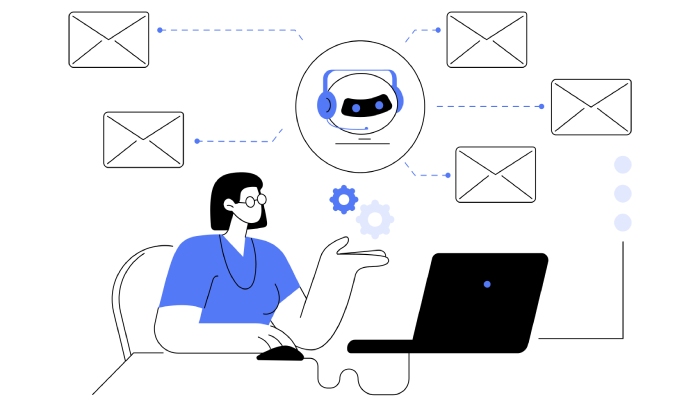
Practical Tips and Best Practices for Marketers in 2025
To harness the full potential of AI in email marketing effectively, marketers should adhere to several best practices optimized for 2025 and beyond:
- Embrace Comprehensive Email List Management: Regular email list cleaning, supported by AI-driven dataset analysis, is essential to maintain list health and improve deliverability. Utilize platforms like SharpSpring or ConvertKit for automated list segmentation and hygiene.
- Leverage AI for Deep Customer Segmentation and Behavioral Targeting: Use advanced segmentation to implement targeted drip campaigns and event-triggered emails. Campaign automation platforms such as Campaign Monitor and Sender offer powerful tools for nuanced customer segmentation.
- Optimize Email Content with AI: Employ AI-powered email content optimization tools to enhance subject lines, preview text, and body copy, boosting email open rates and CTR. Incorporate sentiment analysis for tailoring tone and message appropriateness.
- Integrate Multi-Channel Marketing Strategies: Coordinate AI-driven email campaigns with other channels using CRM-capable platforms like Keap and Salesforce Pardot to create cohesive customer experiences and maximize lead nurturing.
- Invest in Smart Autoresponders and Automated Follow-Ups: Enable response automation to handle inquiries promptly, increasing customer satisfaction while reducing manual workload. Tools like Yesware and Mixmax excel in sales and email response automation.
- Conduct Ongoing A/B Testing and Analytics Monitoring: Continuous evaluation of campaign performance through email analytics is vital. Use machine learning algorithms to refine strategies based on evolving customer behavior.
- Prioritize Compliance and Ethical AI Use: Maintain adherence to data privacy laws and ethical protocols to foster customer trust. Platforms such as Zoho Campaigns and ActiveCampaign assist with compliance management and consent tracking.
Implementing these best practices in conjunction with the insights from leading AI researchers and developers will help marketers achieve superior email marketing outcomes in 2025.

